Akshay Iyer
Continuous Treatment Effect Estimation Using Gradient Interpolation and Kernel Smoothing
Jan 27, 2024



Abstract:We address the Individualized continuous treatment effect (ICTE) estimation problem where we predict the effect of any continuous-valued treatment on an individual using observational data. The main challenge in this estimation task is the potential confounding of treatment assignment with an individual's covariates in the training data, whereas during inference ICTE requires prediction on independently sampled treatments. In contrast to prior work that relied on regularizers or unstable GAN training, we advocate the direct approach of augmenting training individuals with independently sampled treatments and inferred counterfactual outcomes. We infer counterfactual outcomes using a two-pronged strategy: a Gradient Interpolation for close-to-observed treatments, and a Gaussian Process based Kernel Smoothing which allows us to downweigh high variance inferences. We evaluate our method on five benchmarks and show that our method outperforms six state-of-the-art methods on the counterfactual estimation error. We analyze the superior performance of our method by showing that (1) our inferred counterfactual responses are more accurate, and (2) adding them to the training data reduces the distributional distance between the confounded training distribution and test distribution where treatment is independent of covariates. Our proposed method is model-agnostic and we show that it improves ICTE accuracy of several existing models.
Fully Bayesian inference for latent variable Gaussian process models
Nov 04, 2022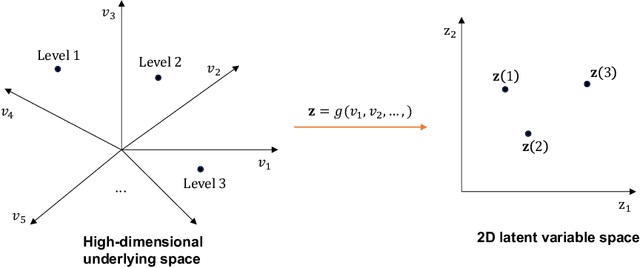
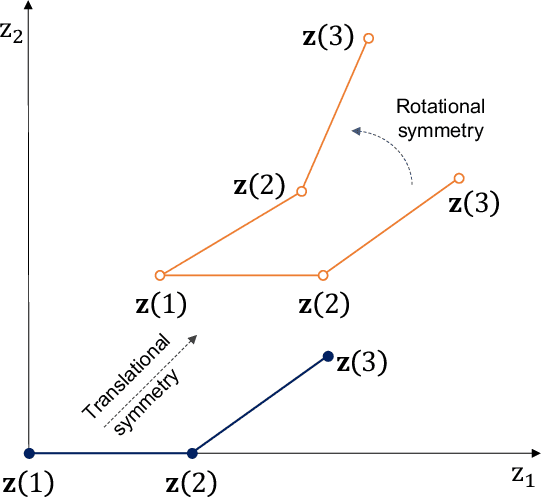
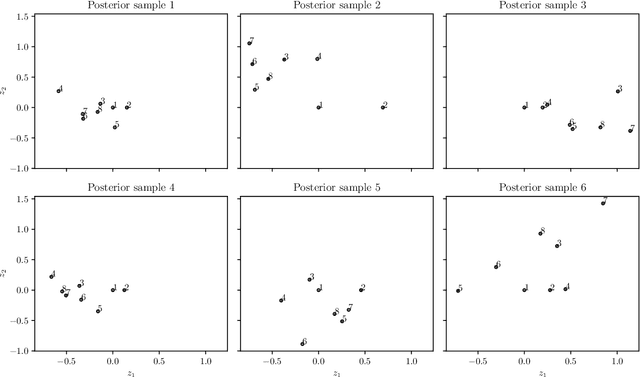
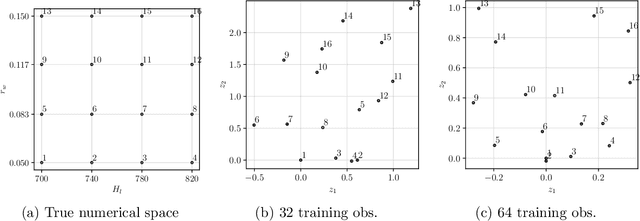
Abstract:Real engineering and scientific applications often involve one or more qualitative inputs. Standard Gaussian processes (GPs), however, cannot directly accommodate qualitative inputs. The recently introduced latent variable Gaussian process (LVGP) overcomes this issue by first mapping each qualitative factor to underlying latent variables (LVs), and then uses any standard GP covariance function over these LVs. The LVs are estimated similarly to the other GP hyperparameters through maximum likelihood estimation, and then plugged into the prediction expressions. However, this plug-in approach will not account for uncertainty in estimation of the LVs, which can be significant especially with limited training data. In this work, we develop a fully Bayesian approach for the LVGP model and for visualizing the effects of the qualitative inputs via their LVs. We also develop approximations for scaling up LVGPs and fully Bayesian inference for the LVGP hyperparameters. We conduct numerical studies comparing plug-in inference against fully Bayesian inference over a few engineering models and material design applications. In contrast to previous studies on standard GP modeling that have largely concluded that a fully Bayesian treatment offers limited improvements, our results show that for LVGP modeling it offers significant improvements in prediction accuracy and uncertainty quantification over the plug-in approach.
Learning to estimate a surrogate respiratory signal from cardiac motion by signal-to-signal translation
Jul 20, 2022
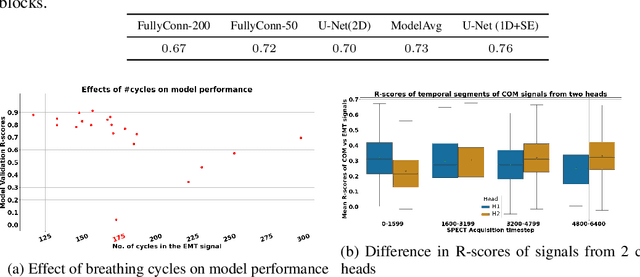
Abstract:In this work, we develop a neural network-based method to convert a noisy motion signal generated from segmenting rebinned list-mode cardiac SPECT images, to that of a high-quality surrogate signal, such as those seen from external motion tracking systems (EMTs). This synthetic surrogate will be used as input to our pre-existing motion correction technique developed for EMT surrogate signals. In our method, we test two families of neural networks to translate noisy internal motion to external surrogate: 1) fully connected networks and 2) convolutional neural networks. Our dataset consists of cardiac perfusion SPECT acquisitions for which cardiac motion was estimated (input: center-of-count-mass - COM signals) in conjunction with a respiratory surrogate motion signal acquired using a commercial Vicon Motion Tracking System (GT: EMT signals). We obtained an average R-score of 0.76 between the predicted surrogate and the EMT signal. Our goal is to lay a foundation to guide the optimization of neural networks for respiratory motion correction from SPECT without the need for an EMT.
Learning to identify cracks on wind turbine blade surfaces using drone-based inspection images
Jul 20, 2022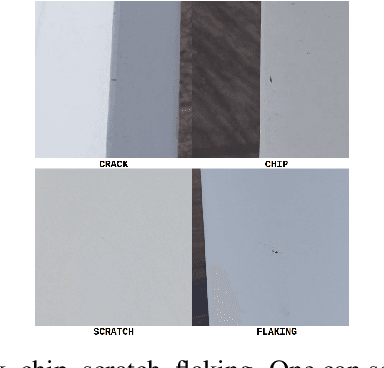

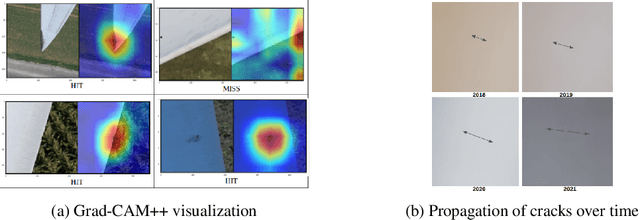
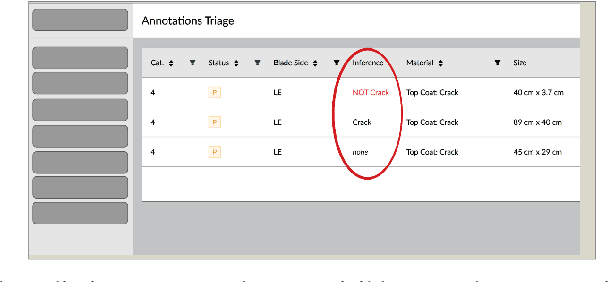
Abstract:Wind energy is expected to be one of the leading ways to achieve the goals of the Paris Agreement but it in turn heavily depends on effective management of its operations and maintenance (O&M) costs. Blade failures account for one-third of all O&M costs thus making accurate detection of blade damages, especially cracks, very important for sustained operations and cost savings. Traditionally, damage inspection has been a completely manual process thus making it subjective, error-prone, and time-consuming. Hence in this work, we bring more objectivity, scalability, and repeatability in our damage inspection process, using deep learning, to miss fewer cracks. We build a deep learning model trained on a large dataset of blade damages, collected by our drone-based inspection, to correctly detect cracks. Our model is already in production and has processed more than a million damages with a recall of 0.96. We also focus on model interpretability using class activation maps to get a peek into the model workings. The model not only performs as good as human experts but also better in certain tricky cases. Thus, in this work, we aim to increase wind energy adoption by decreasing one of its major hurdles - the O\&M costs resulting from missing blade failures like cracks.
Uncertainty-aware Mixed-variable Machine Learning for Materials Design
Jul 11, 2022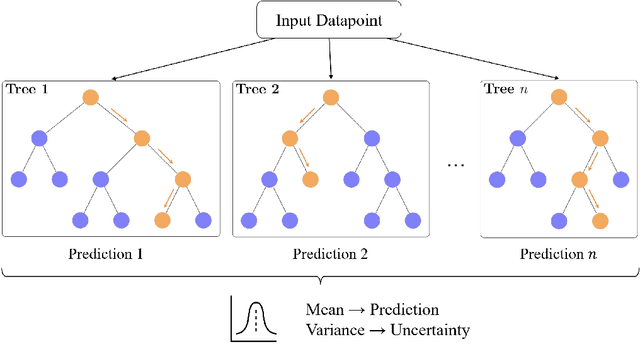

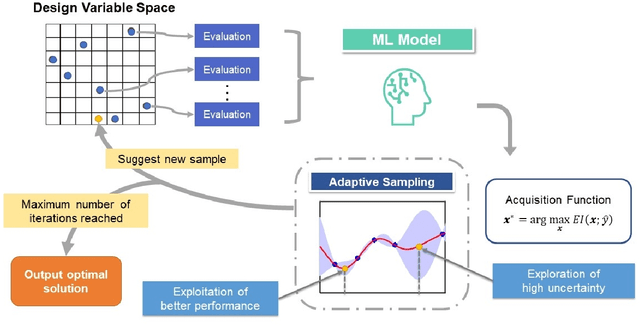
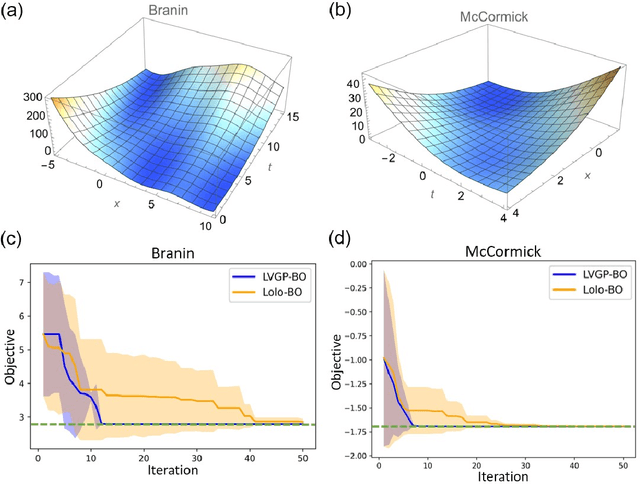
Abstract:Data-driven design shows the promise of accelerating materials discovery but is challenging due to the prohibitive cost of searching the vast design space of chemistry, structure, and synthesis methods. Bayesian Optimization (BO) employs uncertainty-aware machine learning models to select promising designs to evaluate, hence reducing the cost. However, BO with mixed numerical and categorical variables, which is of particular interest in materials design, has not been well studied. In this work, we survey frequentist and Bayesian approaches to uncertainty quantification of machine learning with mixed variables. We then conduct a systematic comparative study of their performances in BO using a popular representative model from each group, the random forest-based Lolo model (frequentist) and the latent variable Gaussian process model (Bayesian). We examine the efficacy of the two models in the optimization of mathematical functions, as well as properties of structural and functional materials, where we observe performance differences as related to problem dimensionality and complexity. By investigating the machine learning models' predictive and uncertainty estimation capabilities, we provide interpretations of the observed performance differences. Our results provide practical guidance on choosing between frequentist and Bayesian uncertainty-aware machine learning models for mixed-variable BO in materials design.
An Automated System for Detecting Visual Damages of Wind Turbine Blades
May 22, 2022
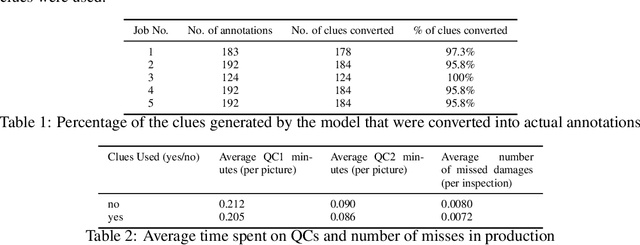
Abstract:Wind energy's ability to compete with fossil fuels on a market level depends on lowering wind's high operational costs. Since damages on wind turbine blades are the leading cause for these operational problems, identifying blade damages is critical. However, recent works in visual identification of blade damages are still experimental and focus on optimizing the traditional machine learning metrics such as IoU. In this paper, we argue that pushing models to production long before achieving the "optimal" model performance can still generate real value for this use case. We discuss the performance of our damage's suggestion model in production and how this system works in coordination with humans as part of a commercialized product and how it can contribute towards lowering wind energy's operational costs.
Scalable Gaussian Processes for Data-Driven Design using Big Data with Categorical Factors
Jun 30, 2021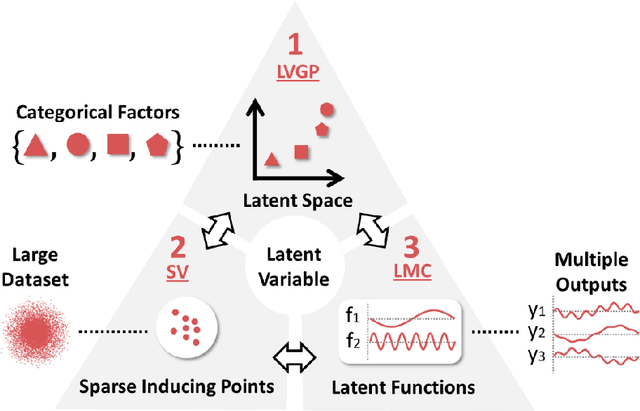
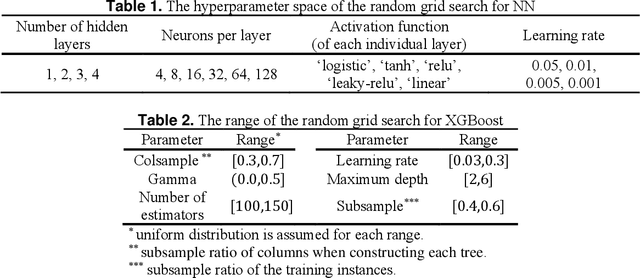
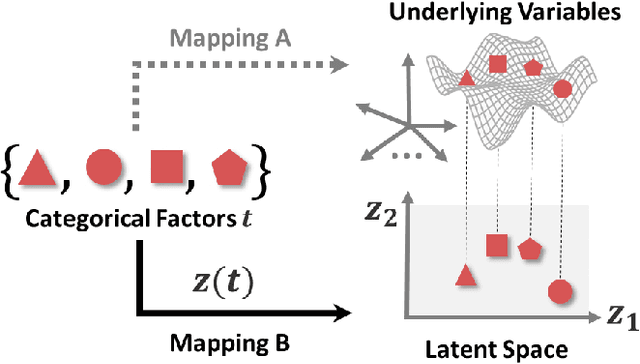
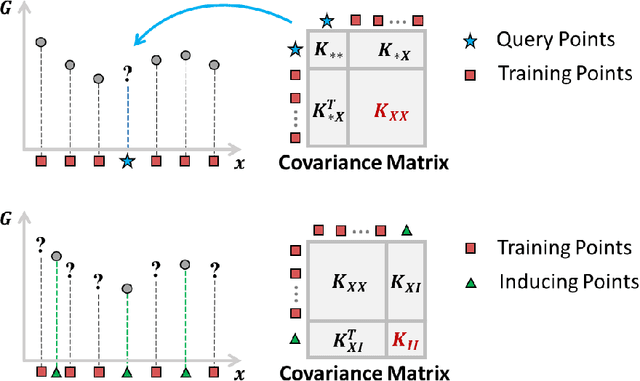
Abstract:Scientific and engineering problems often require the use of artificial intelligence to aid understanding and the search for promising designs. While Gaussian processes (GP) stand out as easy-to-use and interpretable learners, they have difficulties in accommodating big datasets, categorical inputs, and multiple responses, which has become a common challenge for a growing number of data-driven design applications. In this paper, we propose a GP model that utilizes latent variables and functions obtained through variational inference to address the aforementioned challenges simultaneously. The method is built upon the latent variable Gaussian process (LVGP) model where categorical factors are mapped into a continuous latent space to enable GP modeling of mixed-variable datasets. By extending variational inference to LVGP models, the large training dataset is replaced by a small set of inducing points to address the scalability issue. Output response vectors are represented by a linear combination of independent latent functions, forming a flexible kernel structure to handle multiple responses that might have distinct behaviors. Comparative studies demonstrate that the proposed method scales well for large datasets with over 10^4 data points, while outperforming state-of-the-art machine learning methods without requiring much hyperparameter tuning. In addition, an interpretable latent space is obtained to draw insights into the effect of categorical factors, such as those associated with building blocks of architectures and element choices in metamaterial and materials design. Our approach is demonstrated for machine learning of ternary oxide materials and topology optimization of a multiscale compliant mechanism with aperiodic microstructures and multiple materials.
A Conditional Generative Model for Predicting Material Microstructures from Processing Methods
Oct 04, 2019


Abstract:Microstructures of a material form the bridge linking processing conditions - which can be controlled, to the material property - which is the primary interest in engineering applications. Thus a critical task in material design is establishing the processing-structure relationship, which requires domain expertise and techniques that can model the high-dimensional material microstructure. This work proposes a deep learning based approach that models the processing-structure relationship as a conditional image synthesis problem. In particular, we develop an auxiliary classifier Wasserstein GAN with gradient penalty (ACWGAN-GP) to synthesize microstructures under a given processing condition. This approach is free of feature engineering, requires modest domain knowledge and is applicable to a wide range of material systems. We demonstrate this approach using the ultra high carbon steel (UHCS) database, where each microstructure is annotated with a label describing the cooling method it was subjected to. Our results show that ACWGAN-GP can synthesize high-quality multiphase microstructures for a given cooling method.
Data-Centric Mixed-Variable Bayesian Optimization For Materials Design
Jul 04, 2019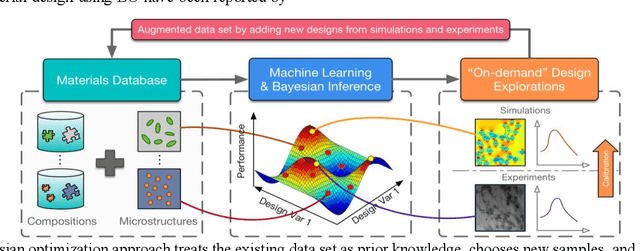

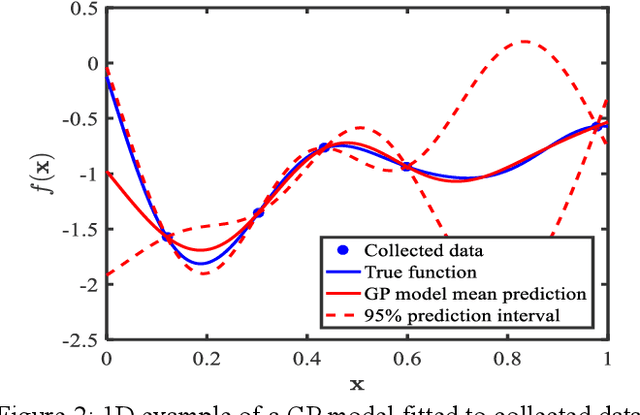
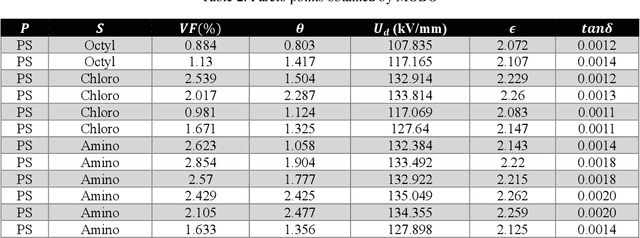
Abstract:Materials design can be cast as an optimization problem with the goal of achieving desired properties, by varying material composition, microstructure morphology, and processing conditions. Existence of both qualitative and quantitative material design variables leads to disjointed regions in property space, making the search for optimal design challenging. Limited availability of experimental data and the high cost of simulations magnify the challenge. This situation calls for design methodologies that can extract useful information from existing data and guide the search for optimal designs efficiently. To this end, we present a data-centric, mixed-variable Bayesian Optimization framework that integrates data from literature, experiments, and simulations for knowledge discovery and computational materials design. Our framework pivots around the Latent Variable Gaussian Process (LVGP), a novel Gaussian Process technique which projects qualitative variables on a continuous latent space for covariance formulation, as the surrogate model to quantify "lack of data" uncertainty. Expected improvement, an acquisition criterion that balances exploration and exploitation, helps navigate a complex, nonlinear design space to locate the optimum design. The proposed framework is tested through a case study which seeks to concurrently identify the optimal composition and morphology for insulating polymer nanocomposites. We also present an extension of mixed-variable Bayesian Optimization for multiple objectives to identify the Pareto Frontier within tens of iterations. These findings project Bayesian Optimization as a powerful tool for design of engineered material systems.
 Add to Chrome
Add to Chrome Add to Firefox
Add to Firefox Add to Edge
Add to Edge